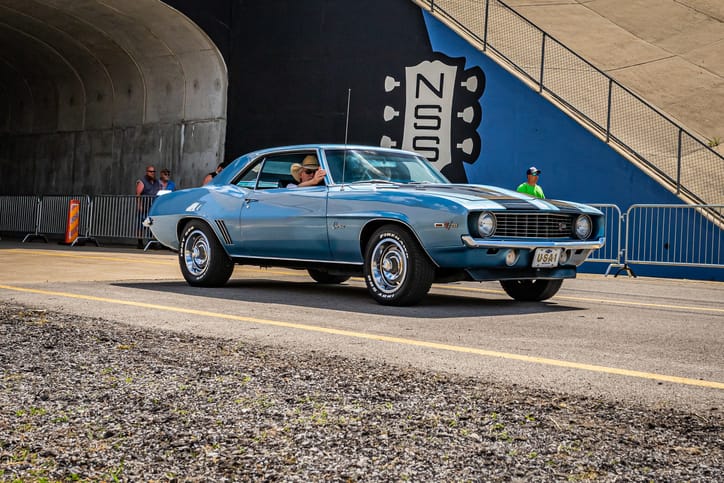Classic Cars: Timeless Beauty and Investment Potential (1967 Ford Mustang Shelby GT500 vs. 1969 Chevrolet Camaro Z/28)

The allure of classic cars transcends mere transportation. They are rolling sculptures, testaments to a bygone era of automotive design and engineering, and powerful symbols of American muscle. Few rivalries capture this essence quite like the Ford Mustang and Chevrolet Camaro. These two pony cars, born in the fiery crucible of the 1960s, continue to hold a special place in the hearts of collectors and enthusiasts alike. But which reigns supreme: the 1967 Ford Mustang Shelby GT500 or the 1969 Chevrolet Camaro Z/28
Timeless Beauty: A Tale of Two Designs
The 1967 Shelby GT500 built upon the already iconic design of the 1964 Mustang. Carroll Shelby, the legendary automotive visionary, took the Mustang from sporty to downright ferocious. The GT500 received a functional hood scoop, imposing side vents, and a ducktail spoiler, all hinting at the raw power lurking beneath. The iconic Shelby stripes and bold Cobra emblem cemented its status as a force to be reckoned with.

The 1969 Camaro, on the other hand, embodied a more aggressive, predator-like stance. Its split grille, hidden headlights, and sharply creased lines exuded a sense of coiled menace. The Camaro's fastback profile with a short rear deck offered a sleeker, more aerodynamic silhouette compared to the Mustang's comparatively blunt rear end.

Beneath the Hood: Powerhouses on Wheels
The 1967 Shelby GT500 was a beast, packing a 427 cubic inch (7.0L) Cobra V8 engine that could churn out a staggering 427 horsepower (depending on the variant). This brute force was paired with a 4-speed manual transmission, demanding skill and finesse from the driver. The throaty roar of the engine and the raw, unadulterated driving experience were hallmarks of the GT500.
The 1969 Camaro Z/28, while slightly less powerful, prioritized handling and agility. Its 350 cubic inch (5.7L) small-block V8 produced around 360 horsepower, but its lighter weight and expertly tuned suspension made it a champion on the racetrack. The Z/28 was a driver's car, offering a more precise and communicative experience.
Legacy and Investment Potential
Both the 1967 Shelby GT500 and the 1969 Camaro Z/28 have cemented their place in automotive history. The Shelby GT500's association with Carroll Shelby and its sheer power make it a highly coveted classic. Depending on condition and variant, a pristine 1967 Shelby GT500 can fetch well over $1 million.

The 1969 Camaro Z/28, on the other hand, is celebrated for its racing prowess and nimble handling. While generally less expensive than the Shelby GT500, well-maintained Z/28s can still command six-figure prices.

The Choice: Power or Precision?
Ultimately, the choice between a 1967 Shelby GT500 and a 1969 Camaro Z/28 boils down to personal preference. Do you crave the untamed power and iconic status of the Shelby, or are you drawn to the precision handling and racetrack pedigree of the Z/28?
Beyond the Numbers: A Passion Project
Owning a classic car is more than just an investment; it's a passion project. These automobiles demand care, attention, and a deep appreciation for their history. Be prepared for the thrill of getting behind the wheel of a bygone era, the satisfaction of maintaining a piece of automotive heritage, and the camaraderie of a dedicated collector community.
The Final Lap
The 1967 Shelby GT500 and the 1969 Camaro Z/28 are more than just classic cars; they are testaments to a golden age of American automotive design and muscle. Whether you choose the raw power of the Shelby or the precision handling of the Z/28, you'll be acquiring a timeless beauty with the potential to appreciate in value. Remember, the true reward lies in the joy of owning and driving a piece of automotive history.
